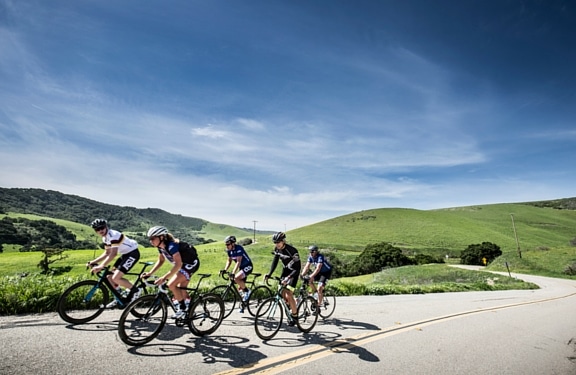
4 Common Mistakes That Wreck Your Workouts
At the start of training ride or an event, all things are possible. You could have a ride that puts a smile on your face or a performance that exceeds your expectations. But you can also screw it up, and a lot of cyclists do that on a regular basis. Here are four ways I see cyclists routinely ruin their rides:
1. Starting Too Hard
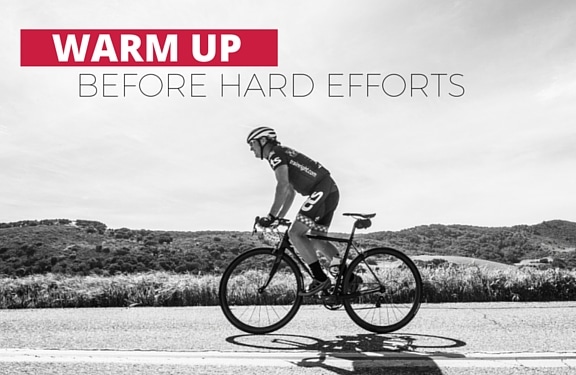
I know you don’t have as much time to ride as you might want and that you’re trying to cram more quality training into your time-crunched schedule. But time-trialing out of the driveway isn’t going to help.
I see a lot of athletes who hit the gas too quickly at the start of their rides, and here’s what happens: Your legs load because the pathways for clearing and processing lactate aren’t ready for the onslaught. And when it’s hot out your cooling system (sweat) isn’t ready to dissipate huge amounts of heat suddenly generated by your muscles. In the first 10 minutes of your ride you overload your muscles with lactate and drive your core temperature up, and then you have to spend the next 20-30 minutes recovering form that.
[blog_promo promo_categories=”coaching” ids=”” /]Better choice: Spend the first 15-20 minutes focused on activating your body. During this period incorporate one or two 30-second high cadence, low resistance intervals to get your legs moving. Also include two 1-minute hard efforts (at or above lactate threshold) to facilitate the processing of lactate. When you start a hard effort after this, you’ll feel much better.
2. Waiting Too Long to Start Drinking
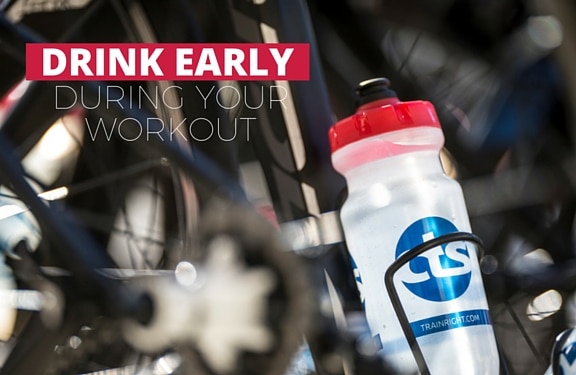
I can’t tell you how many times I’ve been 60 or even 90 minutes into a long group ride (like a century or gran fondo) with riders who have not yet touched their water bottles. Maybe you’re trying to ration your water so you don’t have to stop so often on a long ride, but waiting to start consuming fuels is just digging a hole you’ll struggle to refill the rest the of the day.
This is important because hydration status is integrally tied to core temperature; both hydration status and core temperature are difficult to bring back to normal once they get out of whack, especially while you’re still exercising.
[blog_promo promo_categories=”camp” ids=”” /]Better choice: You should reach for your bottle within the first 20-30 minutes on the bike. That said, you can make the fluids in your bottles last longer by consuming a bottle before you ride, but even with this strategy you should start consuming fluids from your bottles well before the hour mark.
3. Not Eating in the Final Hour
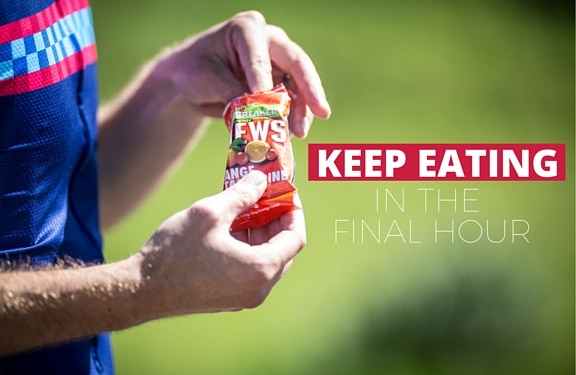
Just like horses when they smell the barn, cyclists sometimes forget their good habits as the end of a ride approaches. When cyclists are within 60 minutes of the finish line or driveway they stop eating, and it gets even more prevalent in the final 30 minutes.
Sometimes it’s financially driven; those bars and gels cost money and can be saved for the next ride. But more often it’s the idea that you don’t need more calories just to finish the final 10-15 miles of today’s ride.
Just like waiting too long to drink at the beginning of a ride, not eating at the end is digging an unnecessary hole for yourself. You’re making today’s ride take more out of you than is necessary, and that means you’re making the recovery from today’s ride take longer.
[blog_promo promo_categories=”bucket list” ids=”” /]If you’re riding three times a week this isn’t such a big deal because you have more than 24 hours before you’ll ride again. But if you’re training on back-to-back days or participating in a multi-day camp, race, or tour, then not eating in the final hour may not have much of an impact on today’s ride, but it can ruin tomorrow’s.
► Free Cycling Training Assessment Quiz
Take our free 2-minute quiz to discover how effective your training is and get recommendations for how you can improve.
4. Failing to Regulate Core Temperature
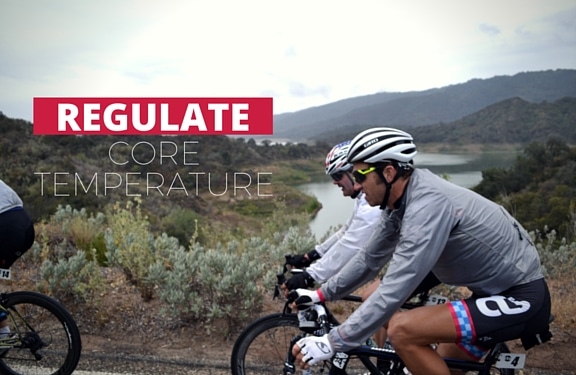
You can be well-rested, optimally-fueled, and hydrated to the gills, but none of that matters if you overheat. Elevated core temperature kills both physical and mental performance in endurance sports.
As I mentioned earlier, core temperature is integrally connected to hydration status, and staying hydrated enables you to better maintain normal core temperature in either hot or cold environments.
Apparel and behavior are also key to regulating core temperature. When the weather changes, react quickly. Put your jacket on when it starts raining, not after you’re soaked and shivering. And when you’re in a rain or snow shower, before you stop under a bridge consider the impact of waiting there on your core temperature. If it’s only a short-lived or fast-moving shower (and doesn’t contain lightning) you’ll stay warmer by continuing to ride, and you’ll dry off sooner by riding your way out of it instead of waiting for the shower to move on. In the mountains, it’s often better to continue and descend to a lower altitude rather than waiting it out at a higher altitude.
Regardless of your fitness level, making these mistakes can turn a great ride into a death march or have you on the phone for a pickup. But when you give yourself time to warm up and make good decisions about eating and drinking to stay fueled and help with temperature regulation, you can have a blast on a bike… also regardless of your fitness level.
Related Articles
7 Springtime Mistakes Endurance Athletes Make
Three Nutrition Mistakes That Kill Performance
11 Surprising Mistakes Cyclists Make When Getting Back in Shape
► FREE Mini-Course: Learn How to Maximize Your Limited Training Time
Learn step-by-step how to overcome limited training time and get faster. Walk away with a personalized plan to increase your performance.
"*" indicates required fields


Comments 6
Why do I get a headache after a hard 50 mile ride? Ward
Author
While I’m not a physician and therefore have to be careful not to make a diagnosis, from my experience with athletes post-workout and post-race headaches often seem to correlate with dehydration or muscle (neck/shoulder) fatigue. The latter may occur even if you are generally accustomed to the distance (50 miles), but not as accustomed to the intensity for that distance. If you are gripping the bars, craning your neck, or trying to maintain a lower position than normal because of the intensity of the ride, you may fatigue muscles in your shoulders and neck and experience a headache afterwards. – Jim Rutberg, CTS Pro Coach
Thanks for the tips. For MTB clarification:
If you must ride in high heat, 90+,
1) should you wear a white jersey, long-sleeve, tight, that wicks moisture?
2) Is it OK to put ice in your camelback, and drink cold water?
3) should your helmet be white to increase sun reflection?
I know that sometimes I take a LONG time to get the fat-burner going where I feel like I’ve got endless energy. I was in a race recently, and didn’t do much of a warm-up. The race seemed to start “too fast”, but I paced the leader. When I got to the first climb, I felt gassed already. Should I have:
a) Done your warm-up, and still paced the leader,
b) Done your warm-up, and let the leader go, hoping he would get gassed,
or
c) Do your warm-up as part of the initial flat section, readying for the climb?
Thanks for your comments!
Mark,
I am not a huge MTBer, but I have spent the last eight years riding in the Caribbean, so lots of sun and heat.
1) The biggest keys to jersey choice that I have discovered is if it has UV blocking/SPF capability, how good at wicking away moisture it is, and is it tight enough to not rub after it dries in the front (airflow) but not restricting my breathing.
2) If you are going to be out for a long ride you can put ice in your camel back. Be careful about putting too much though, as it may not melt fast enough, leaving you without water early on. Also, there are some studies that indicate that very cold water is less effective than cool water at cooling the body and absorbing.
3) Ventilation is more important than color on your helmet. I have a white/light grey helmet that does not have great ventilation. It is HOT on hot days. On the other hand, I have a dark colored helmet with tons of ventilation. I did a 75-mile ride from the southern coast of the Dominican Republic to the northern coast, and it was great.
As for your race, you should have warmed up before it. Most races start fast to sort out the field before the course gets too technical. Cyclocross is like that. You go from resting to max heart rate inside of 30 seconds. If you aren’t warmed up, you will either be out the back from the gun or shortly thereafter. It’s tough to say whether you should have tried to stay with the leader or not without knowing the leader’s abilities.
Good luck training in the heat this year.
Ian
https://www.endurancelab.fit
Another thing that wrecks your workouts is having a body that won’t allow you to workout or train., just sayin’.
Thank you for the excellent guidance.